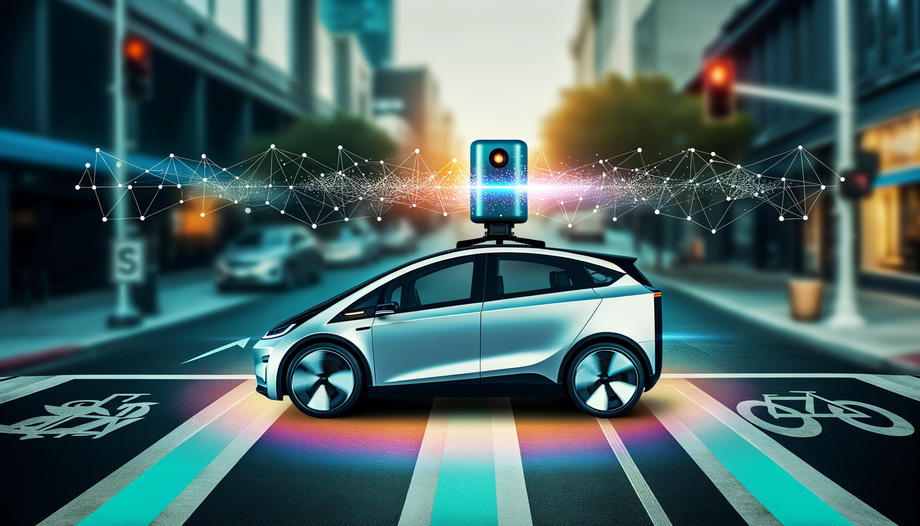In the ever-evolving world of automotive technology, innovation often leads the charge towards a future where vehicles become smarter and more efficient. Among these innovations, Light Detection and Ranging (LiDAR) technology has emerged as a game-changer, particularly in the realm of electric vehicles (EVs) with autonomous capabilities. From enhancing safety to increasing efficiency, LiDAR is carving a new path for EVs as they steer towards a fully autonomous future.
The Core of LiDAR Technology
At its essence, LiDAR technology utilizes laser beams to measure the distance between the sensor and surrounding objects, creating a precise 3D map. This functionality allows autonomous vehicles to "see" their environment with extraordinary fidelity, crucial for enabling robust decision-making systems necessary for safe driving. While radar and cameras have traditionally been used, the precision and reliability that LiDAR offers are unmatched, illuminating its indispensable role in modern autonomous vehicles.
Integration with Electric Vehicles: A Symbiotic Relationship
Electric vehicles are at the forefront of the green revolution, striving for cleaner transportation solutions. As more consumers adopt EVs, expectations for advanced driver-assistance systems (ADAS) and full autonomy have surged. Here's where LiDAR enters the narrative, offering a specialized synergy with electric vehicles:
- Energy Efficiency: Electric vehicles powered with LiDAR can optimize their energy consumption patterns, providing just the right amount of power to navigate obstacles based on real-time data.
- Enhanced Range Management: Precision mapping and guidance offered by LiDAR allow EVs to optimize routes efficiently, extending battery life and circumventing 'range anxiety.'
- Spatial Awareness and Safety: High-resolution point clouds from LiDAR sensors create unparalleled situational awareness, improving pedestrian detection and collision avoidance systems crucial for urban landscapes.
- Scalability in Software Improvements: As EV manufacturers continuously update algorithms for autonomous systems, the adaptability of LiDAR sensors allows for seamless advancements, reducing the need for costly hardware overhauls.
Overcoming Challenges with LiDAR
While LiDAR is a potent tool, it is not without hurdles. The expensive nature of this technology has historically been a barrier, necessitating manufacturers to innovate:
- Cost Reduction: With advancements in solid-state LiDAR and mass production, costs are steadily decreasing, making it more accessible to a wider range of vehicles.
- Weather Conditions: Adverse weather can obscure LiDAR's effectiveness, but combining it with radar or cameras can provide a more comprehensive solution.
Manufacturers are tackling these challenges head-on, promising a future where autonomous electric vehicles equipped with LiDAR become more accessible to everyday consumers.
LiDAR's Transformative Potential in Urban Mobility
In the urban sprawl, where every millimeter counts, LiDAR in electric vehicles becomes a transformative force in achieving seamless mobility solutions:
- Efficient Traffic Management: By mapping intricate traffic patterns and pedestrians, LiDAR-equipped EVs can contribute to smart city initiatives aimed at reducing congestion and improving public transport.
- Autonomous Ridesharing: Imagine autonomous electric taxis, equipped with LiDAR, offering seamless rides in metropolitan cities, reducing traffic and emissions concurrently.
Conclusion: A Future Paved with Precision
The marriage of LiDAR and electric vehicles marks a significant milestone in the journey towards full autonomy and sustainable transport. As technology evolves, consumers can anticipate a driving experience that is not only safer and smarter but also more aligned with environmental goals.
This paradigm shift reaffirms what many automotive experts believe: that we are on the brink of an era where our roads become a stage for a sophisticated choreography, orchestrated by the precise and unparalleled capabilities of LiDAR technology.
Engage with Us!
Are you excited about the integration of LiDAR in electric vehicles? Leave your thoughts in the comments below and let's navigate this journey together.

